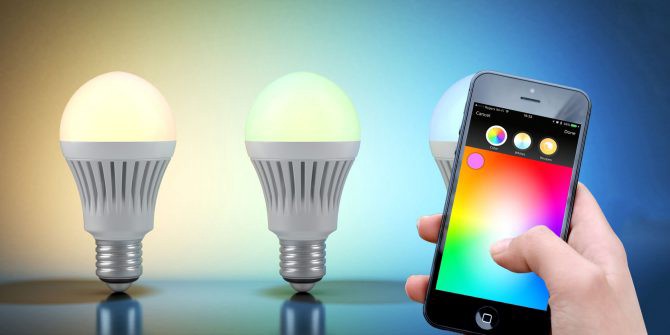Smart bulbs that can be controlled by a hub or smartphone app are no longer a new idea. What’s new is how far this technology has come since it first appeared just a few years ago. Also new: products such as Nanoleaf light panels, a system of interlocking LED panels that allow you to decorate with light, fundamentally change the concept of light bulbs.
Smart LED bulbs are not a commodity, but they are maturing in the market. Today’s bulbs are more compact, much brighter, have better color rendering and, for the most part, have control applications that do more than ever and are easier to configure. Prices have also dropped, with some no-name color-tunable bulbs now available for less than $10 each. (Buyer beware: you get what you pay for).
White LED bulbs are also smart
It’s a little funny, but the reality is that most of us will rarely feel the need to turn all the lights in the house blue or red, unless it’s time to celebrate the victory of our team at the World Series.
White light is also important on its own, as much scientific research today. Cool light closer to blue rays effect is best in the morning. Warm lights best after sunset as it gives relaxing rays. however, not all white LED smart bulbs are color temperature adjustable. Take a look at the specifications before buying.
White smart bulbs reduce the party mode that are a main of dimmable colored bulbs. On the other hand, white smart bulbs are less expensive than colored bulbs. That makes them more affordable to install in multiple rooms.
We have tested almost all white and colored LED bulbs on the market.
Best color LED smart bulb
Philips was one of the pioneer in this market. The Philips Hue ecosystem is the deepest and broadest in the industry, including not only bulbs of every conceivable shape and size, but also indoor and outdoor accessories, including the Philips Hue path light Calla and the Philips Hue outdoor projector.
Runner-up
LIFX is a very strong contender in the smart lighting space and comes second in our roundup .Their unique LIFX+ (which has a variety of infrared LEDs that will help your home security camera see in the dark).
Best white LED smart bulb
Our choice will not surprise anyone who has followed this market. The newest Hue bulbs can be controlled via Bluetooth. It is a high-quality light with a solid warranty. We were given the BR30 form factor for our review, moreover the bulb is also available in A19, candelabra, and even old-school LED filaments.
Runner-up
If you want a white-only smart bulb that doesn’t require a smart home hub, the LIFX Mini White is a great option. Although slightly dimmer than the full size LIFX bulb, it produces 800 lumens equivalent to 60 watts.
Best budget-priced smart bulb
The new line of Cree Connected Max smart bulbs are highly-priced. Those are available in all of the most popular form factors: The A19 Tunable White + Color Changing bulb price is just $10. This supports Bluetooth and Wi-Fi. It will be a best choice for you smart home.
Best smart bulb to pair with a security camera
Most home security cameras have infrared LEDs to give the appearance of night vision. Most home security cameras have infrared LEDs to give the appearance of night vision., but the LIFX+ can illuminate a room it helps the security camera to see more details of the room with its infrared LEDs.
Smart light bulb Functions
- Zigbee: Bulbs that use the popular smart home network protocol require a bridge to communicate with your home Wi-Fi network. This is the technology that Philips has adopted for its Hue range, but it is not the only one.
- Wi-Fi: This class of bulbs communicate directly with your Wi-Fi router, no hubs or bridges required. Both LIFX and TP-Link are great Wi-Fi smart bulbs, but neither company comes close to Signify’s Philips Hue range in terms of the depth and breadth of the Hue ecosystem.
- Bluetooth: These bulbs completely bypass your home network and pair directly with your smartphone or tablet. As such, they cannot be controlled from outside your home. GE and other manufacturers make Bluetooth-enabled light bulbs, some of better quality than others. Signify recently added Bluetooth radios to its range of Philips Hue smart bulbs, removing the need to implement the Philips Hue bridge. Removing the bridge from the equation reduces the overall implementation cost, but adds some limitations. You can find out more in our review of the new Philips Hue bulbs.
Each of these technologies has advantages and disadvantages, so before trying to choose a specific bulb, first try to determine which technology is best for you. If you want to connect your bulbs to a larger smart home system like SmartThings or Nest, Bluetooth bulbs are out of stock. You can control more than one bulb with your phone, but you can’t connect it to sensors or other systems in your home. Don’t like the idea of pairing a light bulb with your phone? A Wi-Fi bulb will work better for you you won’t have as many options as with a Zigbee product.
Either Smart bulb, or smart switch?
That said, smart bulbs, regardless of technology, won’t be for everyone.Some will fail even if there is a dimmer present in the circuit and marked at full power. The quality of light from an LED bulb is likely to be much better.
The good news is that bulb prices are coming down, making it easier to get started with smart bulbs and lower penalties if you find a product isn’t working for you. That said, we want you to start off on the right foot. So, without further ado, here are some deep dives into the most valuable white and colored LED smart bulbs on the market.
Read more: The Top Reading Lights
